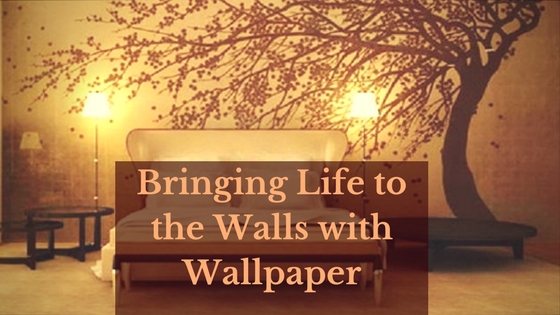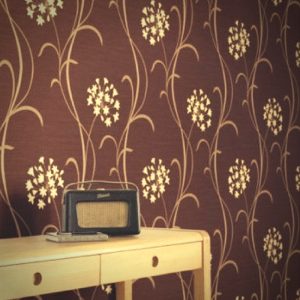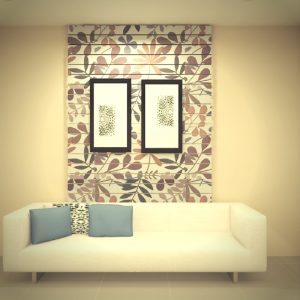Bringing Life to the Walls with Wallpaper
One of the biggest problem areas in a room is a large blank wall that stares back at you as you enter. These walls create a feeling of emptiness within a room, and sometimes act to disrupt the flow of color and design that’s already in place: or they do not fulfill their potential of creating visual impact in a room.
Wallpaper is an inexpensive and popular way to decorate walls and bring them to life. Depending on the size of the wall, its coverage, and what image it wants to portray, wallpapers lend versatility to a room and allow for your creativity.
Working with wallpaper is easy when you know how to do it, and here some tips.
![floral wallpaper]() Preparing a Room for Wallpapering
Preparing a Room for Wallpapering
Wallpaper disasters occur because proper preparation of the wall is not taken seriously. Like when painting a wall or upholstering a couch, a significant amount of time must be dedicated to the preparation of a wall. This extra time spent will save you time and trouble in the long-run.
Measure your wall and purchase wallpaper that will cover the entire surface of the wall (allowing for error and pattern matching). Cut your wallpaper into manageable sized strips when you are ready to use them.
To prepare the wall for wallpapering, remove any switch plates, wall fixtures, and socket covers. Clean the wall thoroughly to remove any dirt and/or mildew, and let it dry completely. Search the wall surface for any holes, depressions, or bumps: these may be repaired using a drywall compound or spackling compound. Apply the compound, smooth it as much as possible, and let it dry thoroughly. Sanding is then required to smooth the surface to make it as easy as possible for the wallpaper to adhere to the wall. Then prime your wall with an acrylic adhesive which is recommended by a wallpaper expert.
If you don’t want to wallpaper, consider painting.
![]() The Act of Wallpapering
The Act of Wallpapering
Once you’ve primed your wall with the adhesive, decide how you want to hang the wallpaper. Go in the direction (right to left or vise versa) that is easiest for you. Cut your wallpaper strips allowing for pattern matching and a small amount of waste at the bottom. Starting from top, apply the wallpaper to the wall. You may want to precut the holes for the switches, other openings, etc. (being very exact with the measurements to avoid error) or cut them as you proceed to hang the wallpaper (the easiest way). Either way you must be precise!
Amateurs often end up with the problem of small air bubbles under the wallpaper, or uneven attachment to the wall. Resist the temptation to use a plastic smoother as it may tear the wallpaper or leave marks if used with improper pressure. Instead, use clean soft cloth and apply gentle pressure with the hand, or a light flexible rubber flap – much like the one used to clean windows.
![]() Designing with Wallpaper
Designing with Wallpaper
Wallpaper provides an opportunity for colors and patterns to be incorporated into a design. The appearance of a large wall may benefit from wallpaper with patterns or stripes to break their overwhelming size. Use vertical stripes to add height to the room, and horizontal ones to create the illusion of a wider space. Another option is to incorporate a dual design – using a striped pattern on the upper half of the wall and a solid or floral print on the lower portion to create interest.
Use borders near the ceiling to create visual interest and give the illusion of height to the room, as it calls attention to the ceiling.
When using wallpaper in more than one room of the house, you have the option of creating fluidity between two rooms without having to use the same wallpaper. The fluidity may be achieved by staying different tones of the same colors, contrasting colors, or similar patterns.
Building the Room from the Wallpaper
When designing an entire room, wallpaper create a nice visual palette with which to work. Wallpapers, because they provide various color and pattern in their designs, may create a central mood in the room (formal, informal, etc.); the source of a color scheme (from the colors in the wallpaper); and even a pattern that will flow throughout the room (floral patterns, stripes, or dots).
Wallpaper provides a great opportunity for design ingenuity. Don’t be afraid to use the wall to its full potential – either to enhance the design of the room or build an entire room around it.



 Preparing a Room for Wallpapering
Preparing a Room for Wallpapering The Act of Wallpapering
The Act of Wallpapering Designing with Wallpaper
Designing with Wallpaper